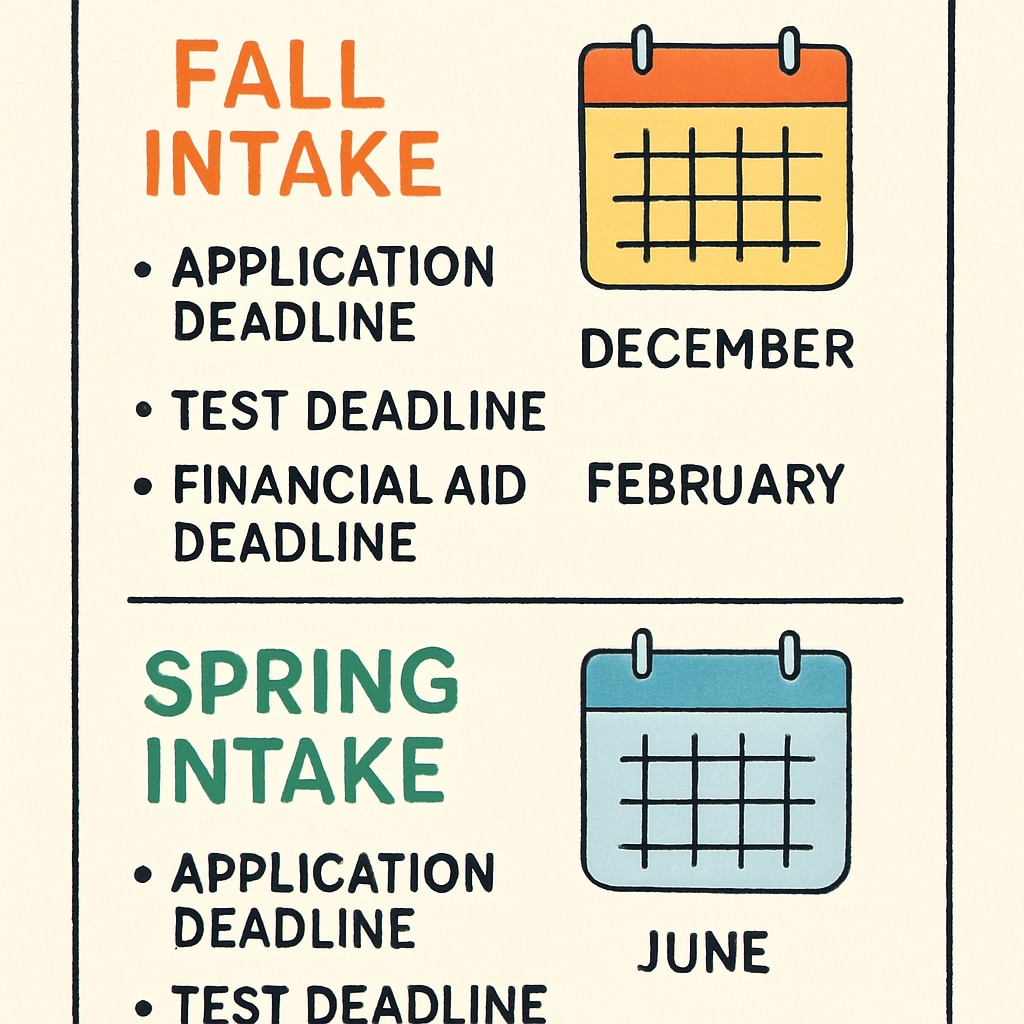The process of applying for a U.S. Master’s program can be both exciting and challenging. To maximize your chances of success, understanding the importance of timing is crucial. This article delves into the golden window for U.S. Master’s applications, evaluates the advantages and disadvantages of different timeframes, and provides actionable strategies for prospective students who wish to study in the United States.
Understanding the Application Timeline: Key Deadlines and Considerations
When it comes to U.S. Master’s applications, timing is everything. Most universities operate on a fall admission cycle, with deadlines typically falling between December and February for the following academic year. Some programs also offer spring or summer intakes, though these are less common. The early months of the application cycle can be particularly competitive, as many schools offer rolling admissions, meaning spots may fill up quickly.
Here are the primary cycles and their general timelines:
- Fall Intake: Applications open as early as August or September, with deadlines from December to February.
- Spring Intake: Applications typically close between July and October for a January start.
- Rolling Admissions: Some programs accept applications year-round, but early submissions are advantageous.
Each of these cycles comes with its own pros and cons. For example, fall admissions often offer the broadest range of programs and funding opportunities, while spring admissions may feature less competition but fewer choices. Therefore, it’s essential to align your application timeline with your personal and academic goals.

Advantages of Applying Early: Why Procrastination is Risky
Submitting your application early in the cycle can significantly boost your chances of acceptance. Early applicants often have access to more funding opportunities, such as scholarships and assistantships, which may no longer be available later in the process. Additionally, applying early allows you to address any unforeseen issues, such as missing documents or standardized test scores.
Early submission also gives you the flexibility to adapt if your initial plans change. For instance, if you don’t get into your top-choice program, you may still have time to apply to other schools within the same cycle.
However, applying early requires thorough preparation. This includes gathering recommendation letters, taking standardized tests like the GRE or TOEFL, and crafting a compelling personal statement. Starting the process at least a year in advance ensures you have ample time to polish your application.
Strategic Tips for a Successful U.S. Master’s Application
To navigate the complexities of the application process, follow these actionable tips:
- Research Programs Early: Begin exploring programs at least 12–18 months before your intended start date. Use resources like university websites and rankings from trusted sources such as U.S. News.
- Stay Organized: Create a spreadsheet to track application requirements, deadlines, and fees for each program.
- Prepare for Standardized Tests: Register for the GRE/GMAT and English proficiency tests (e.g., TOEFL, IELTS) early to allow time for retakes if necessary.
- Seek Strong Recommendations: Request letters from professors or employers who can provide detailed insights into your skills and achievements.
- Tailor Your Application: Customize your personal statement for each program to highlight why you’re an ideal fit.
By following these steps, you can ensure that your application stands out among the competition.

Conclusion: Timing is the Key to Success
Applying for a U.S. Master’s program is a significant investment of time and effort, but careful planning can make the process much smoother. By understanding the advantages of different application cycles, preparing early, and leveraging targeted strategies, you can maximize your chances of securing a spot in your desired program. Remember, the key to success lies in starting early and staying organized throughout the journey.
Readability guidance: Use concise paragraphs, organize information with lists, and maintain a balance between active and passive voice. Distribute transition words evenly to enhance flow and coherence.


